The 330e uses a 181bhp 2.0-litre petrol engine familiar from elsewhere in the 3 Series range. Mounted within its eight-speed automatic gearbox is a 67bhp electric motor (its output increases to 111bhp with an ‘Xtraboost’ function in Sport mode) that powers a 12kWh lithium ion battery. That battery lives under the rear seats, with the fuel tank moving to the boot. The 40-litre fuel tank is 20 litres smaller than that of the non-hybrid 3 Series but results in the 330e’s one key compromise: a 105-litre cut in boot capacity.
The 330e is rear-wheel drive for now; xDrive four-wheel drive comes later this year, when a Touring version will also be introduced. Being rear-wheel drive with a fully integrated electric drive unit means the BMW system is claimed to be seamless in its operation in shifting between electric and petrol power, or a combination of both, as the electric motor sits on the flywheel and isn’t powering an entirely different axle, as is the case with some hybrid systems.
While driving this plug-in BMW is a straightforward process – it can be left in a simple Hybrid setting to leave the car to best decide from which source it should draw power – there are several other driving modes and many more functions to explore, all of which we’ll look at in the months ahead.
While the powertrain may not be as familiar, the specification of our 330e is. M Sport remains a popular trim level for the 3 Series, and it is offered on the 330e alongside entry-level SE and Sport. On top of the M Sport trim, which brings with it the usual array of visual and dynamic sporting upgrades, we have an optional M Sport Plus package that brings bigger 19in alloys, beefier brakes, variable sport steering and, intriguingly, adaptive dampers. This is the first time adaptive dampers have been included in a package – despite typically receiving rave reviews in the media, uptake from buyers had been less than 10%.
It’s rare for long-term reports like this to offer conclusions so early on, but it’s worth pointing out now that the 330e will not be suitable for all 3 Series buyers, specifically private buyers who won’t enjoy the tax benefits of company car buyers.
For them, offsetting the 330e’s list price against the potential money saved in fuel will be negligible, unless nearly all journeys are within the 35-mile electric-only range, at which point you may as well just buy a Tesla Model 3 for very similar money – or a BMW M340i, as Thompson says many private buyers are doing.
Not only is this our first long-term test of a hybrid 3 Series but it is also our first extended taste of a 3 Series in this G20 generation, which has already earned a five-star road test rating in 320d form. Finding out how much of that magic remains in this 330e will make for a fascinating few months to come.
Second Opinion
The 330e has been a favourite of mine since I drove a skinny-tyred Sporttrim version of the last generation. The G20 is quicker and does 20 urban miles on its battery without trying too hard. But, as with so many more modestly powered cars, smaller wheels and less grip makes for more driver appeal.
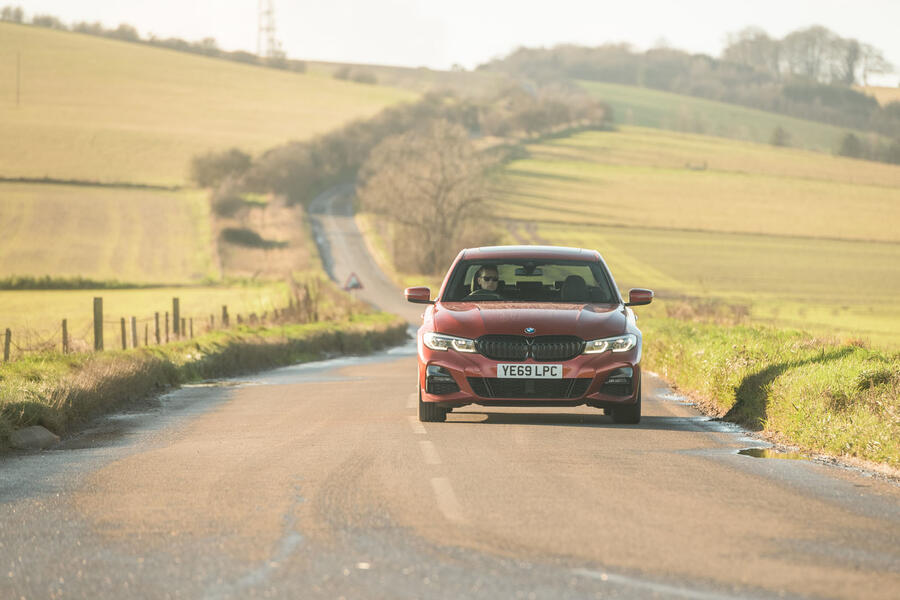
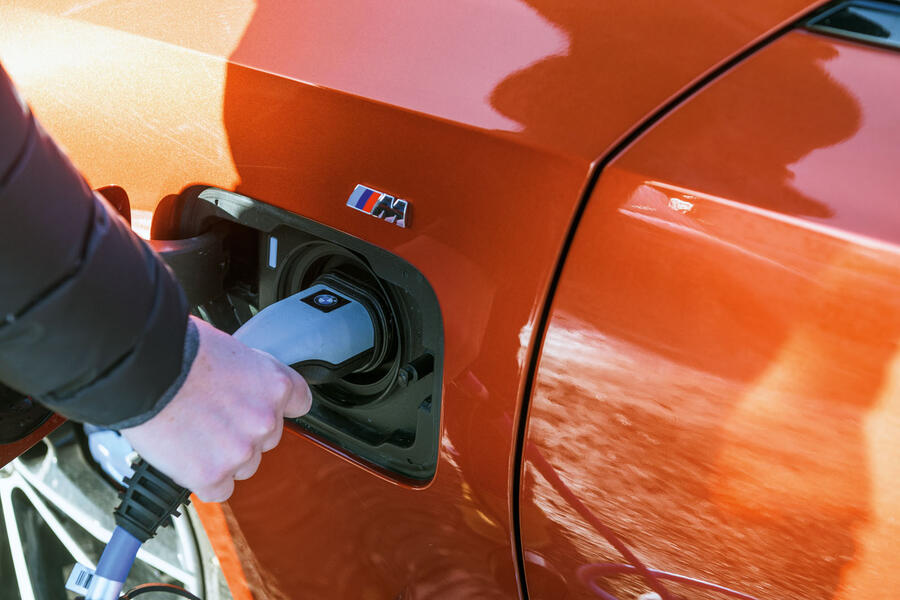

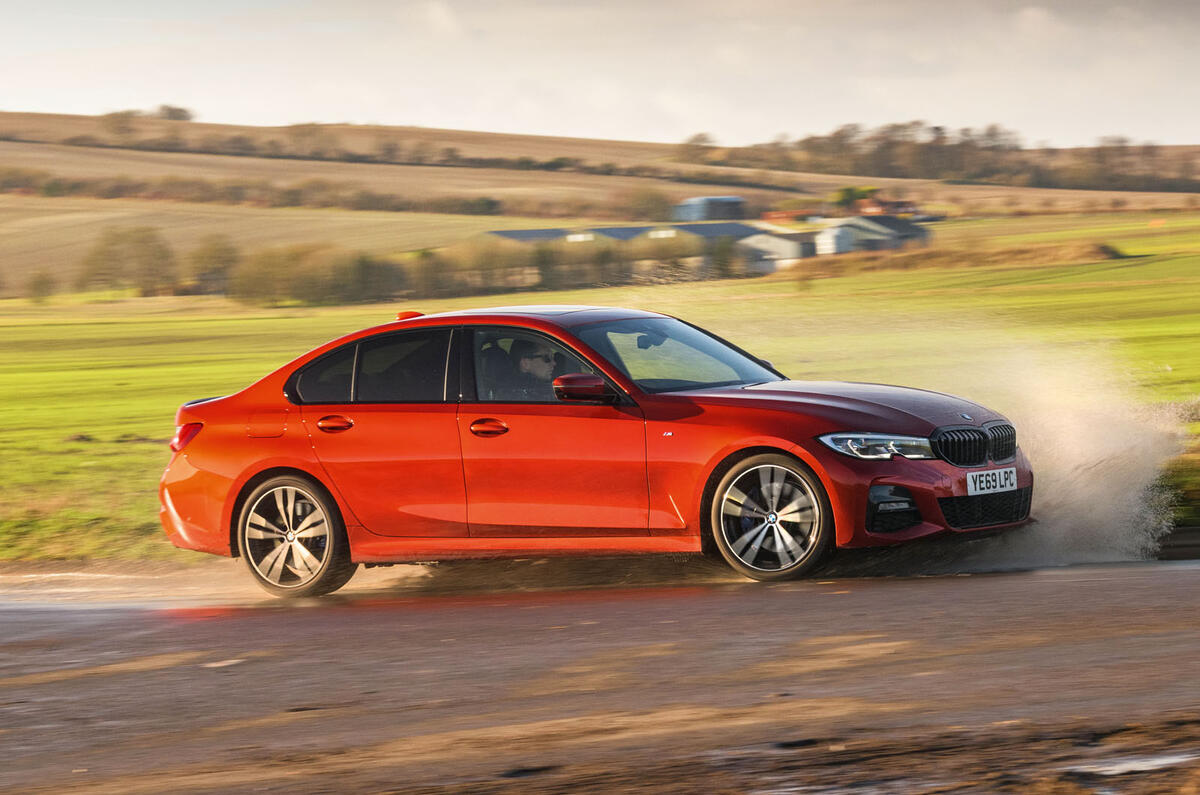
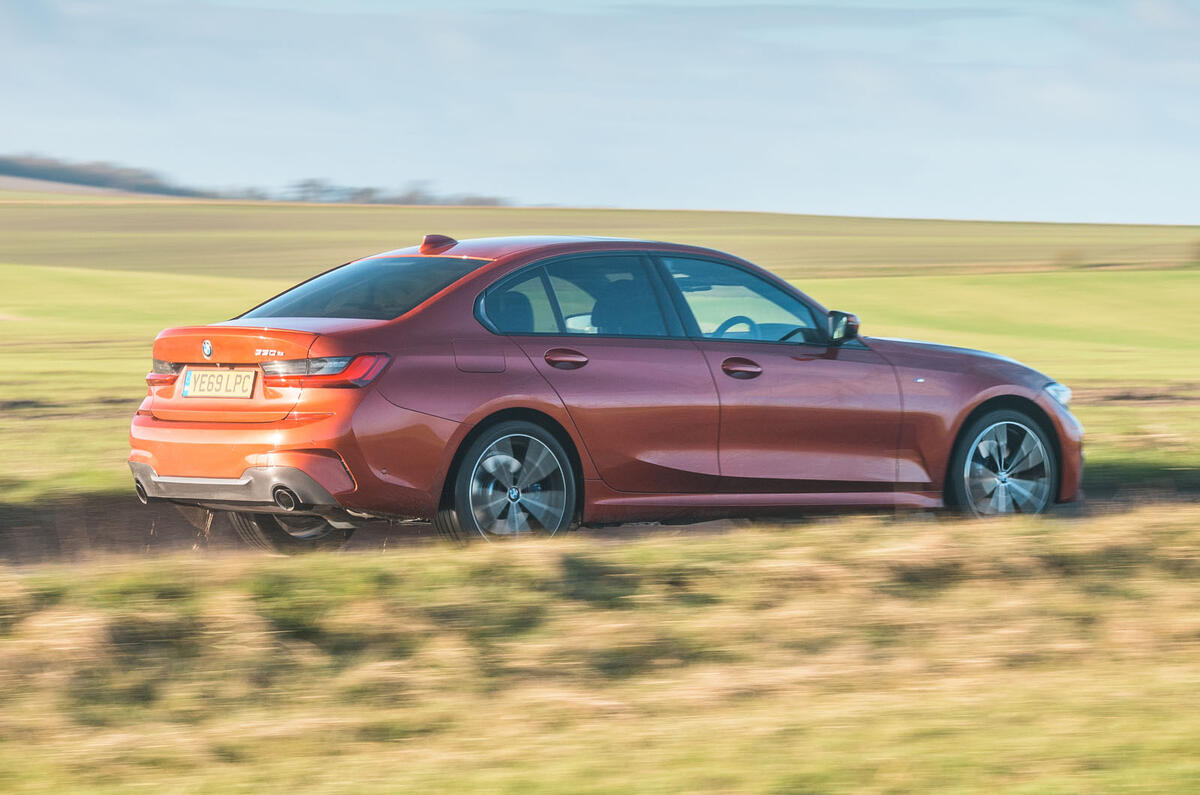
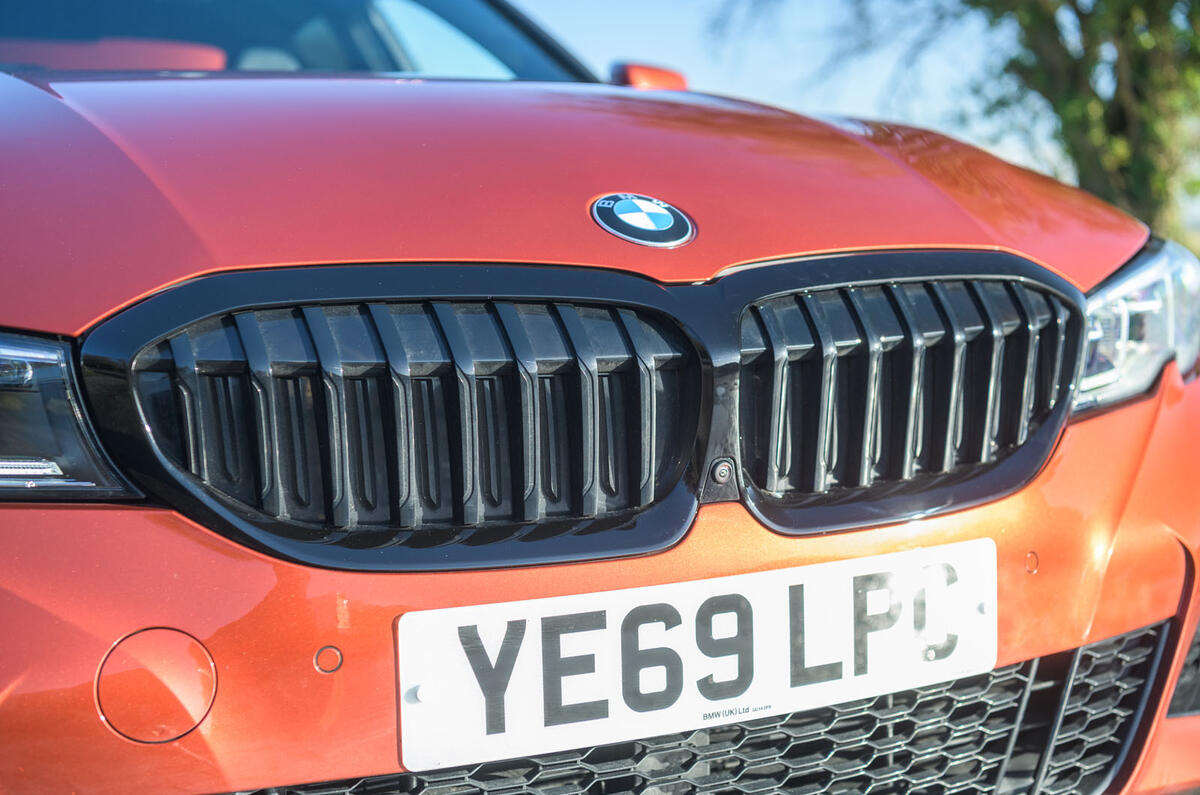

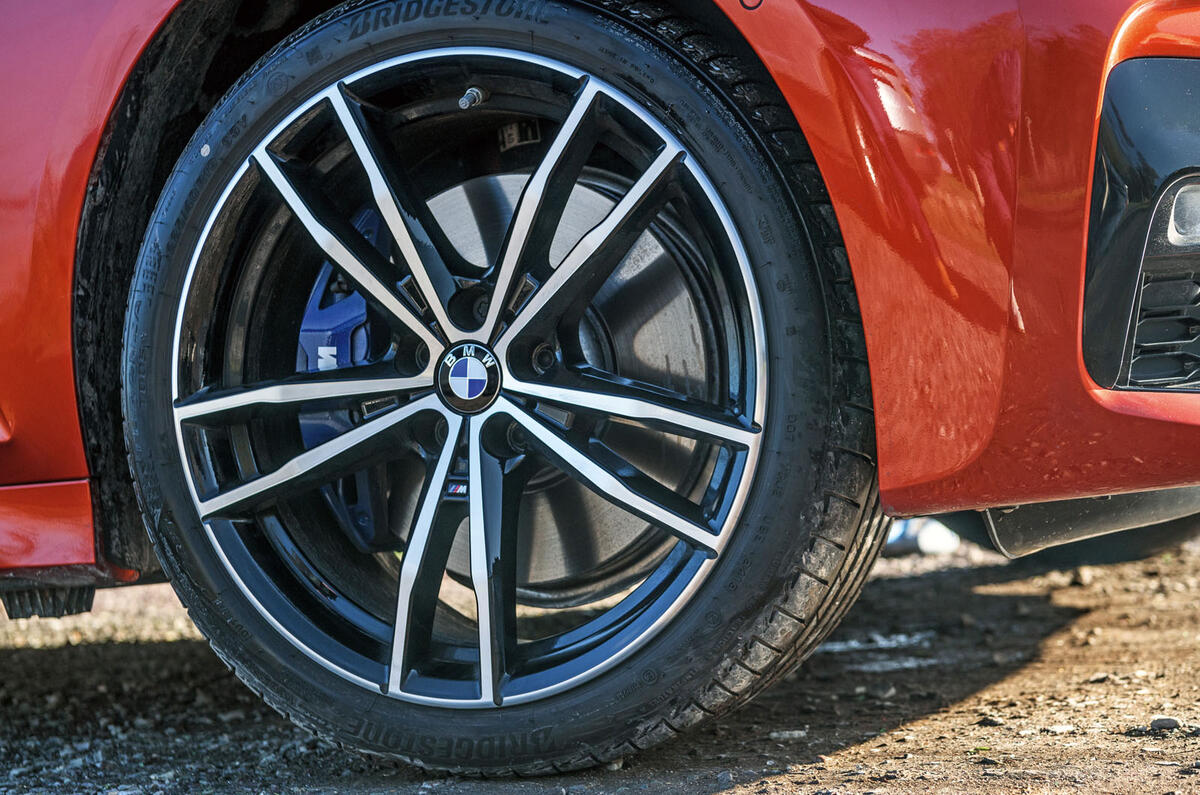
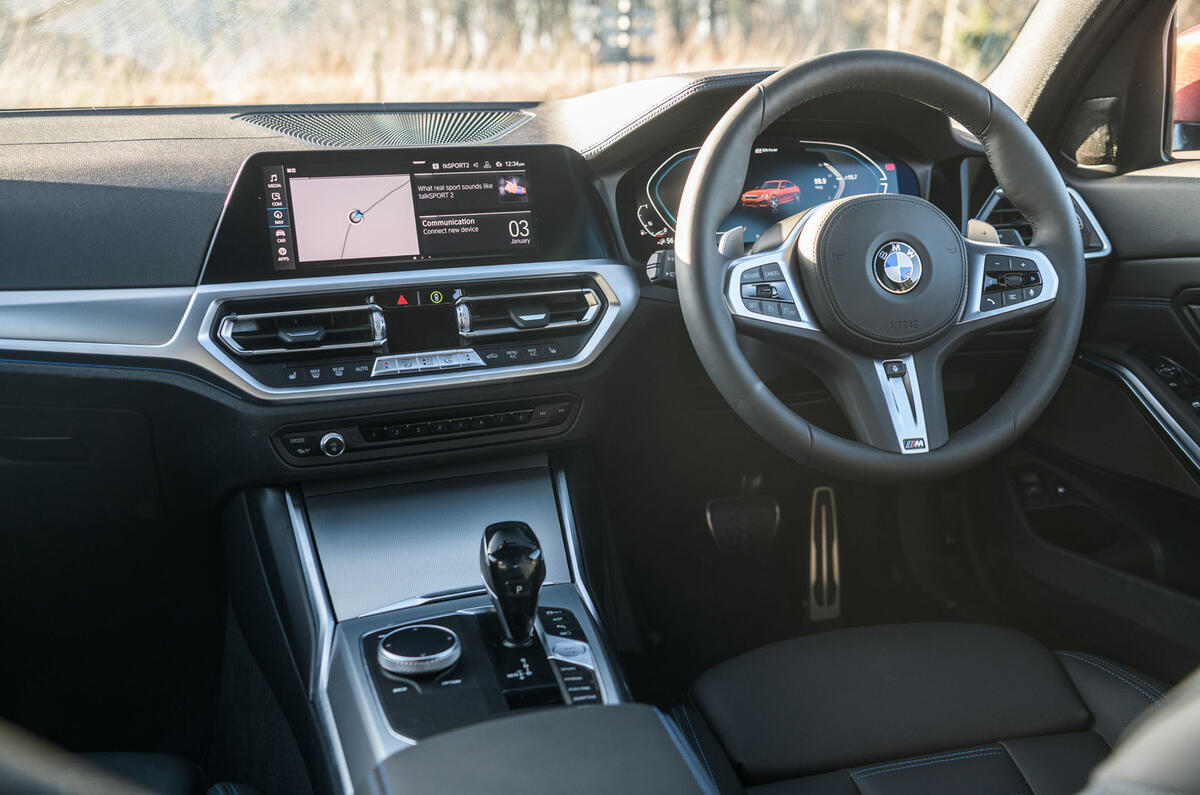
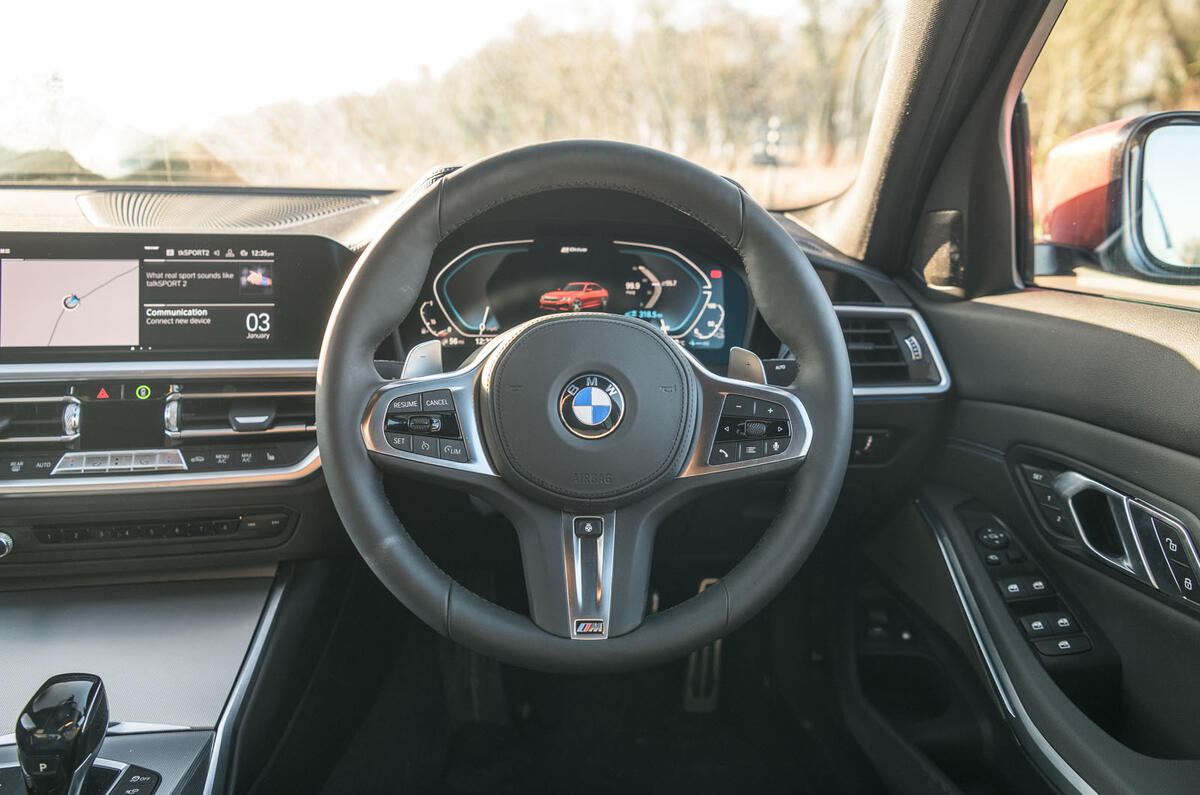
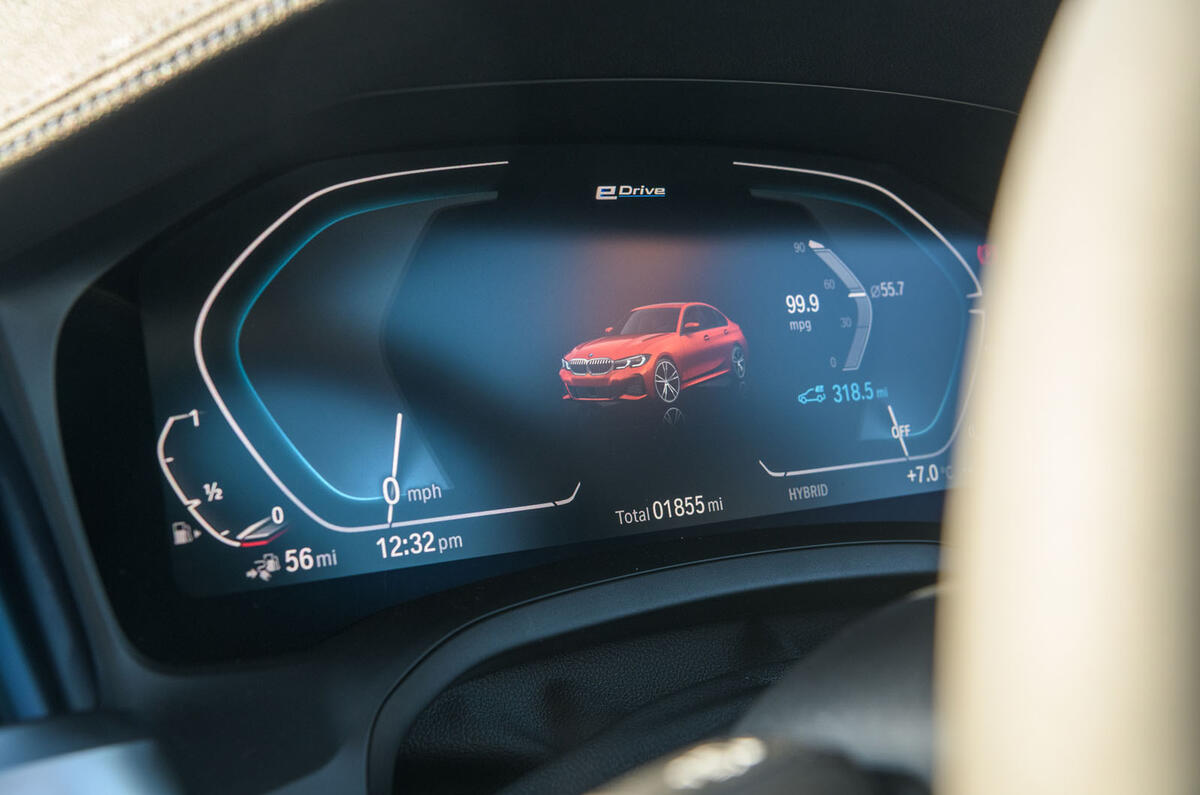
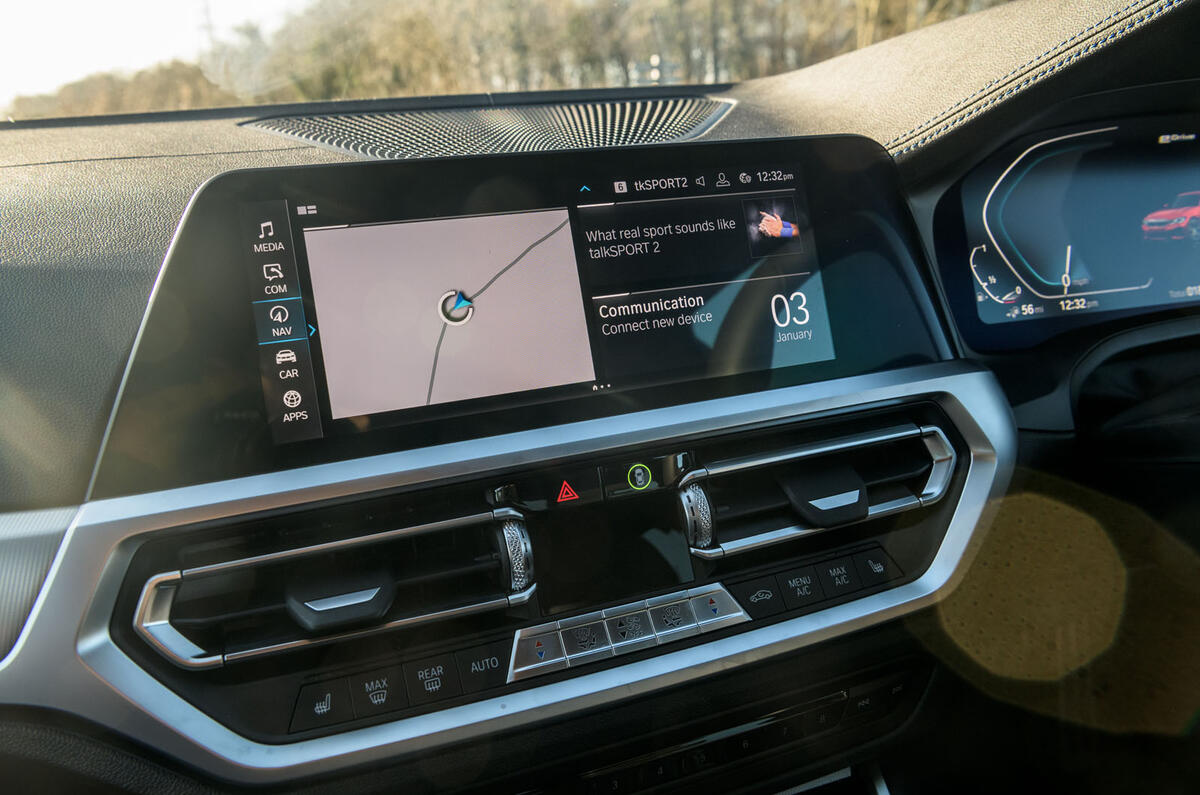
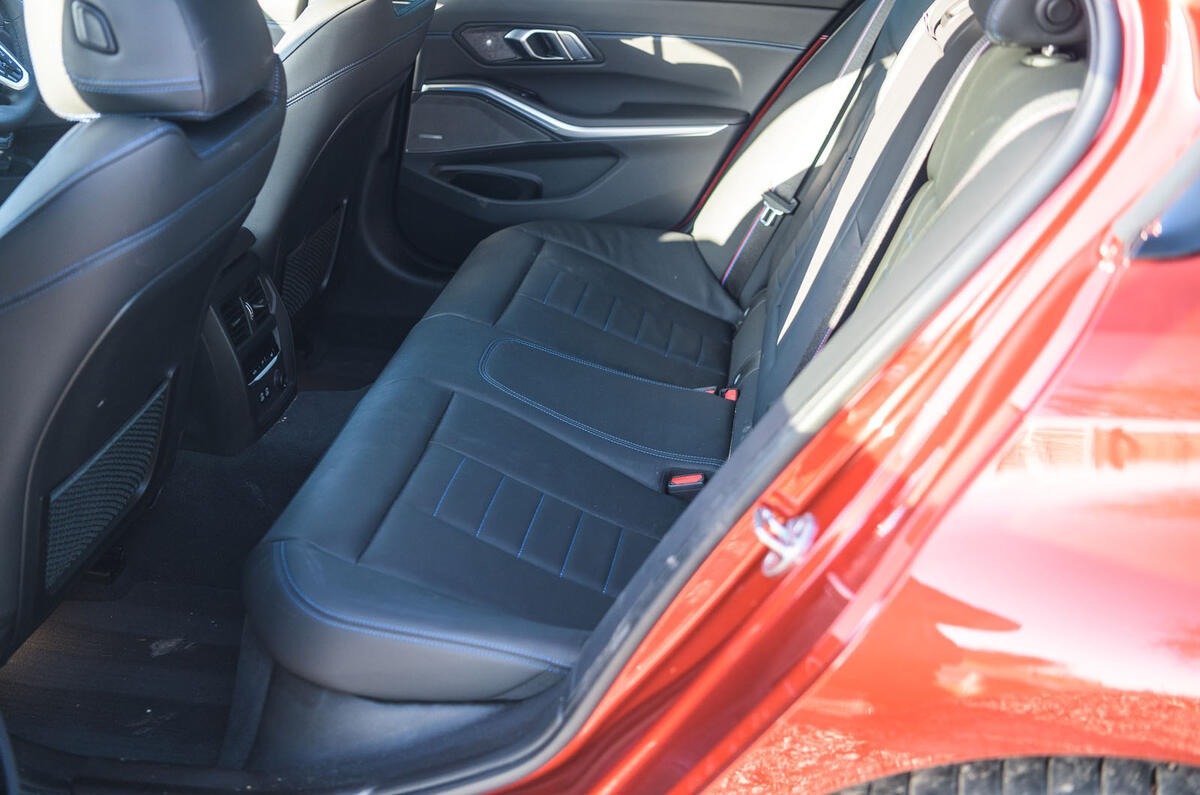
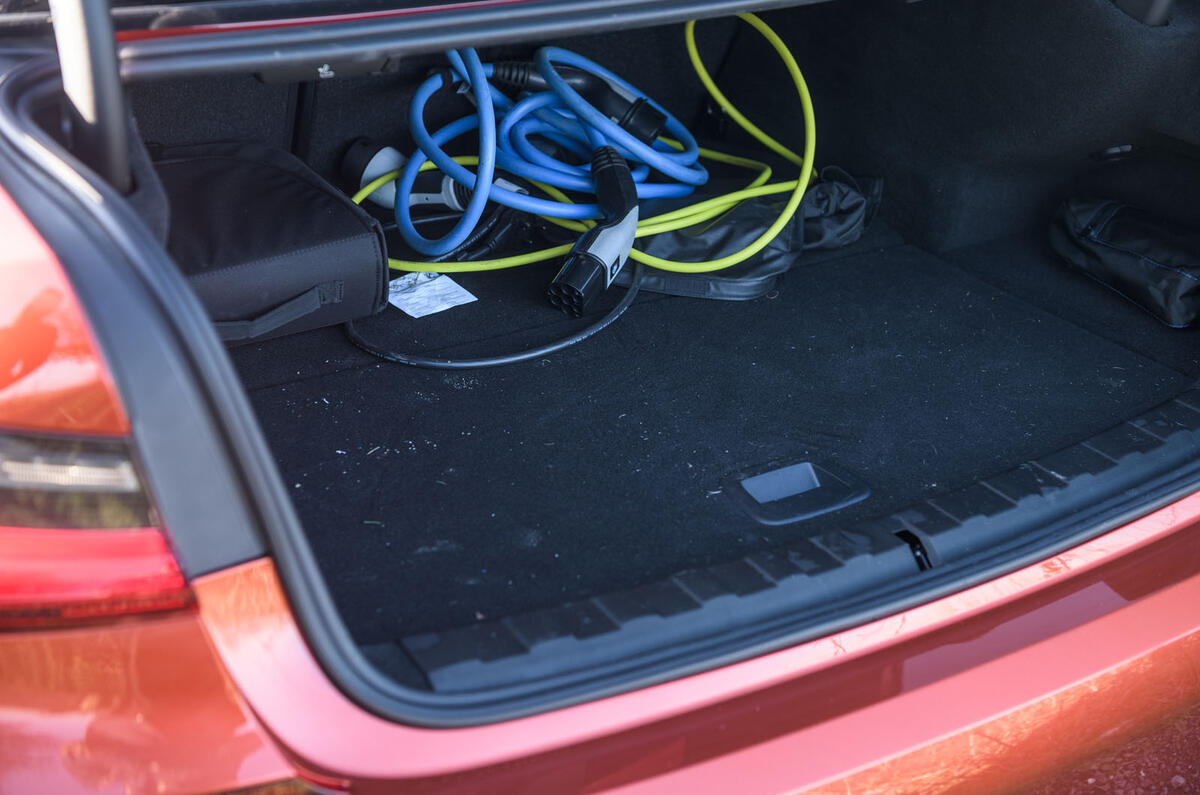
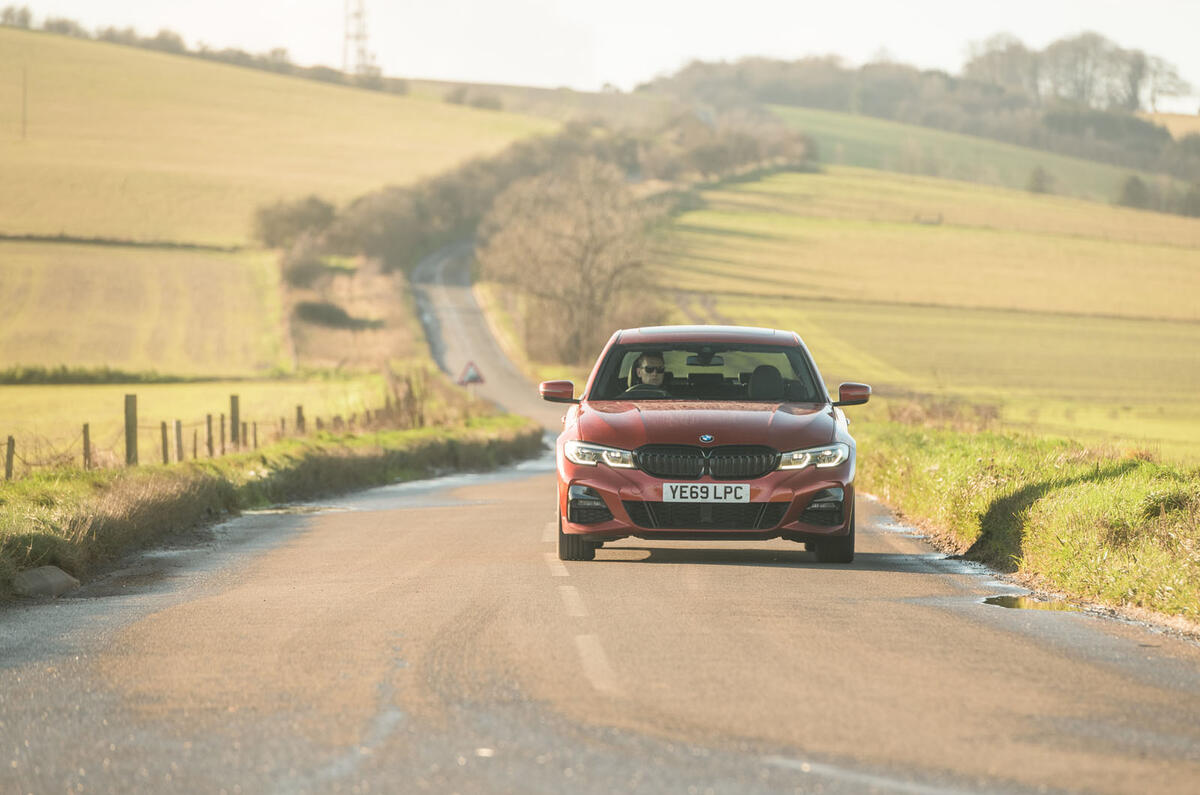
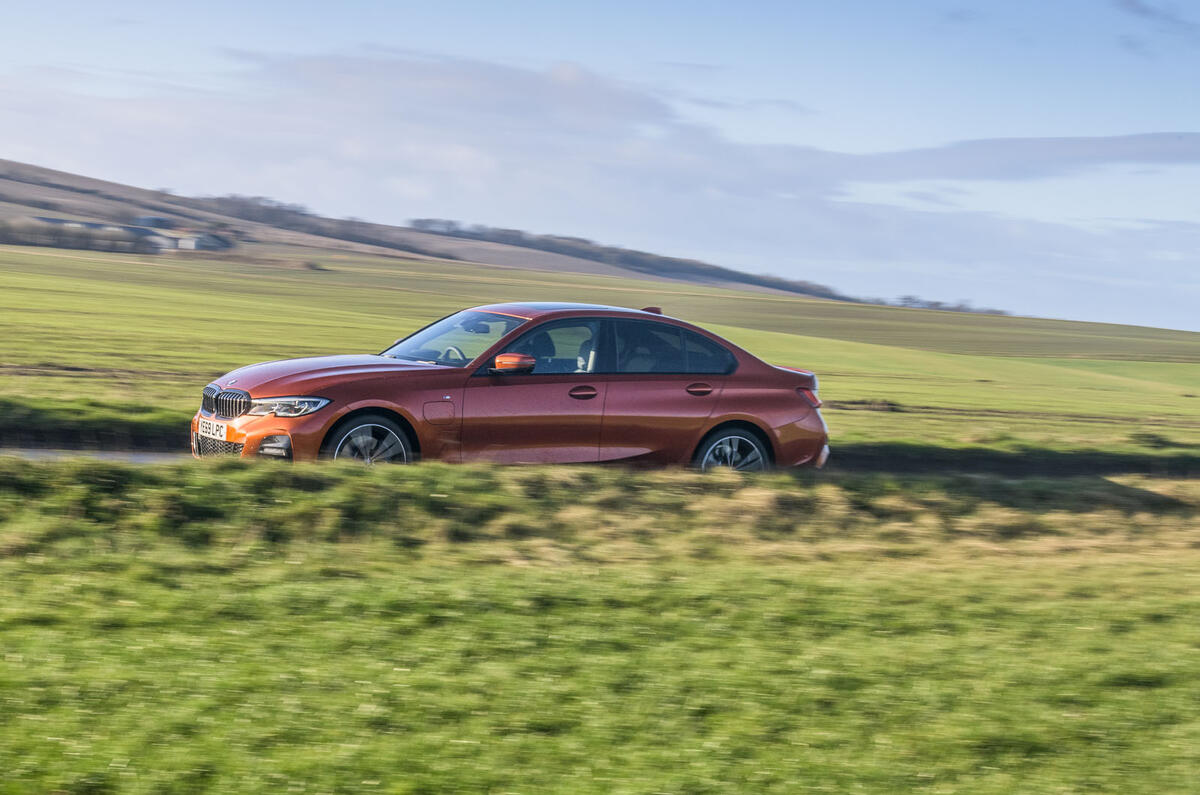
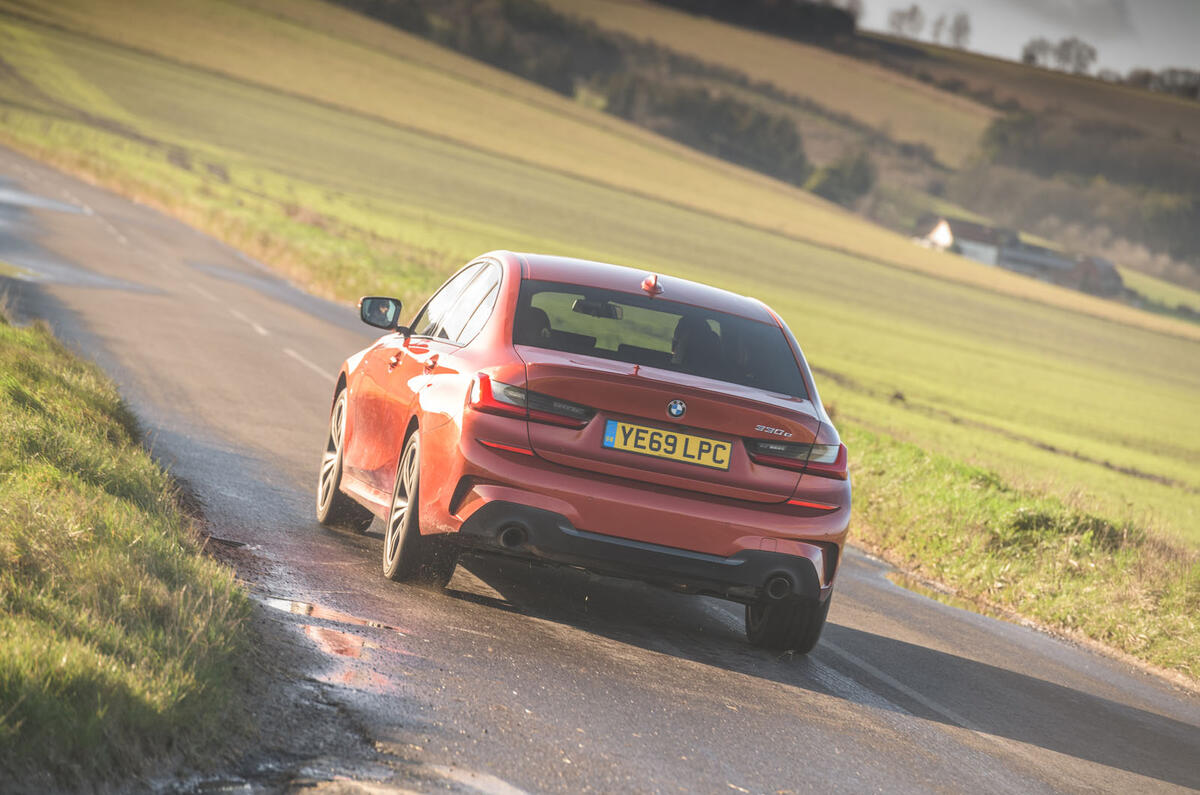
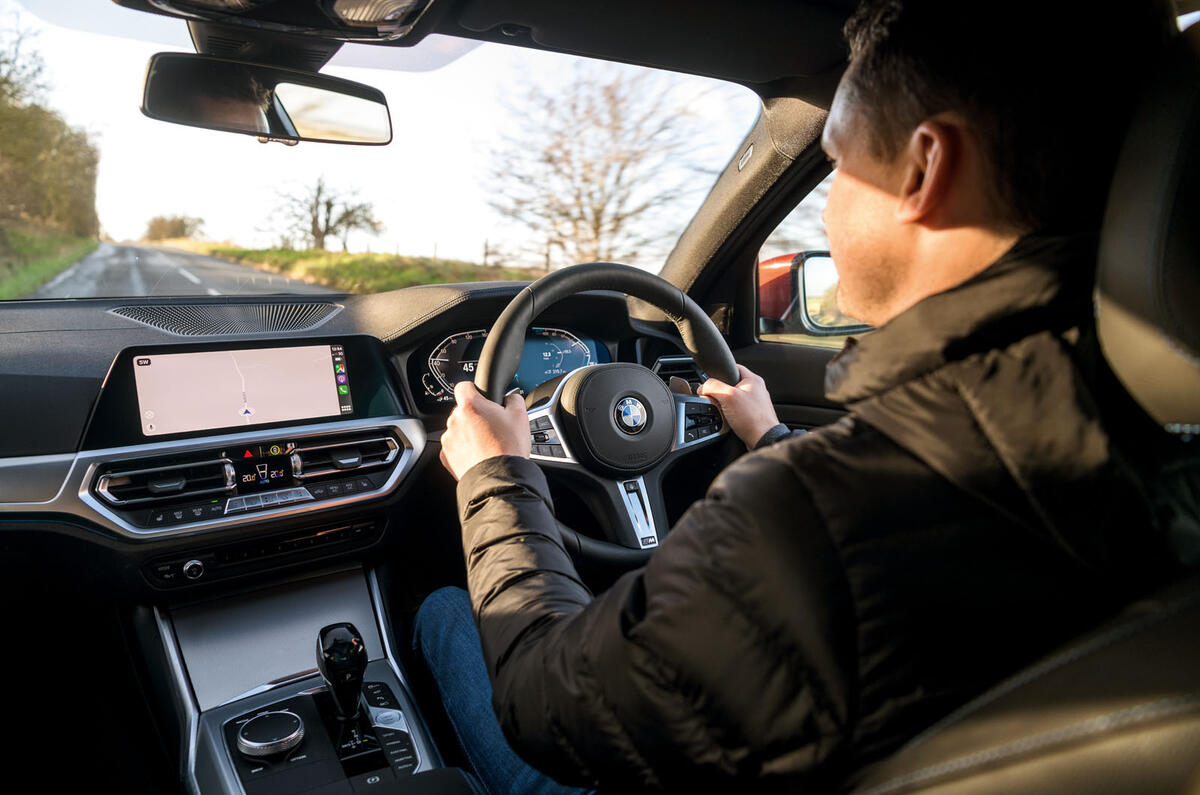
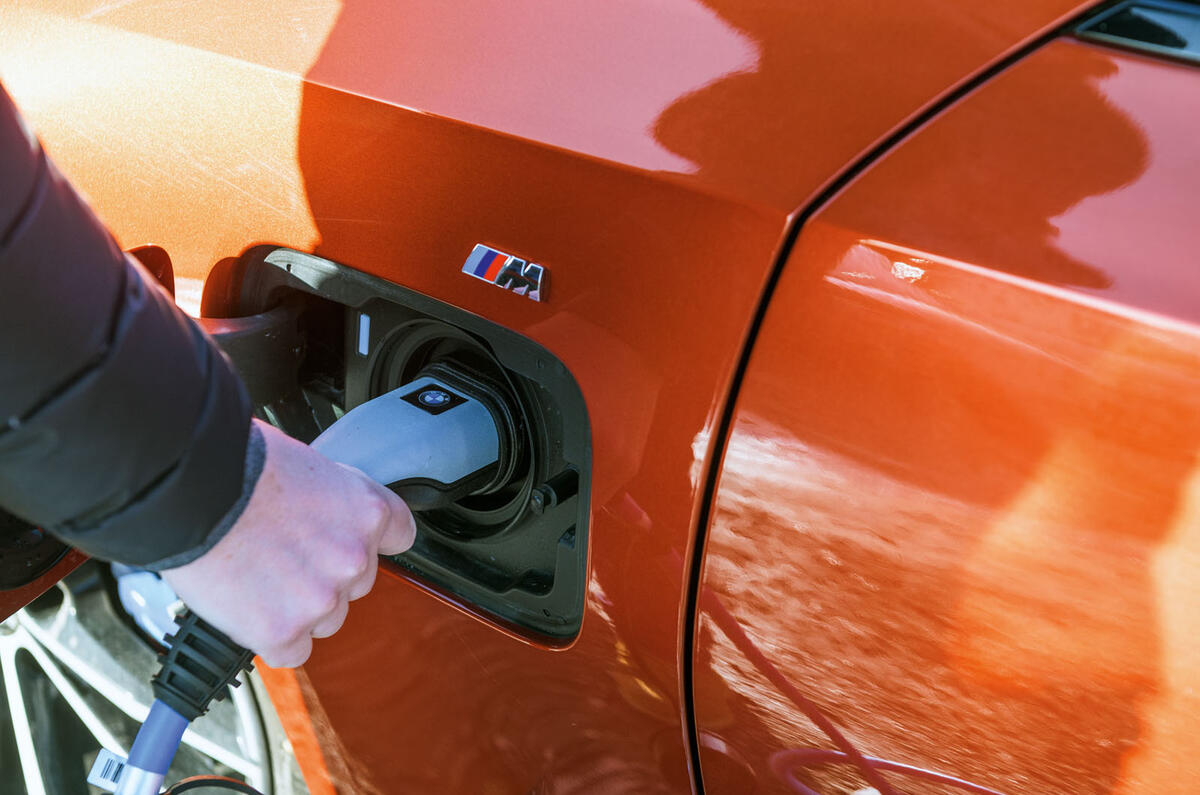
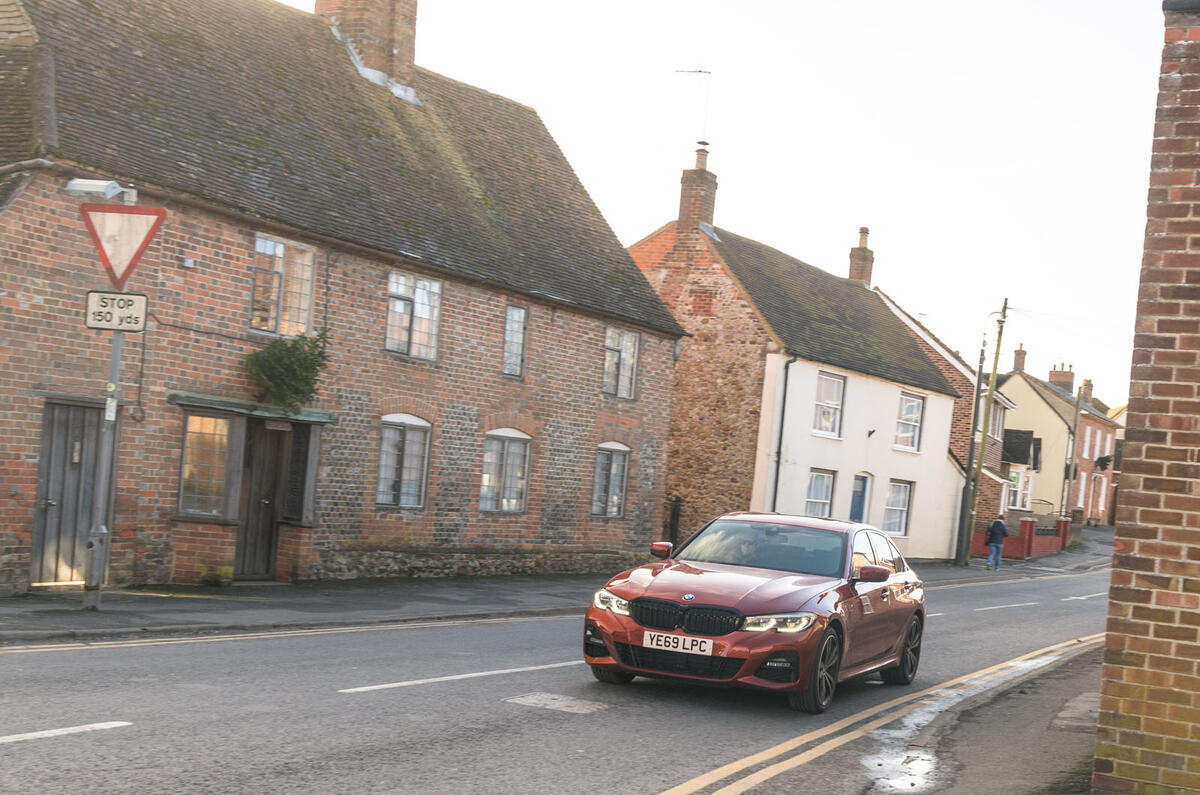
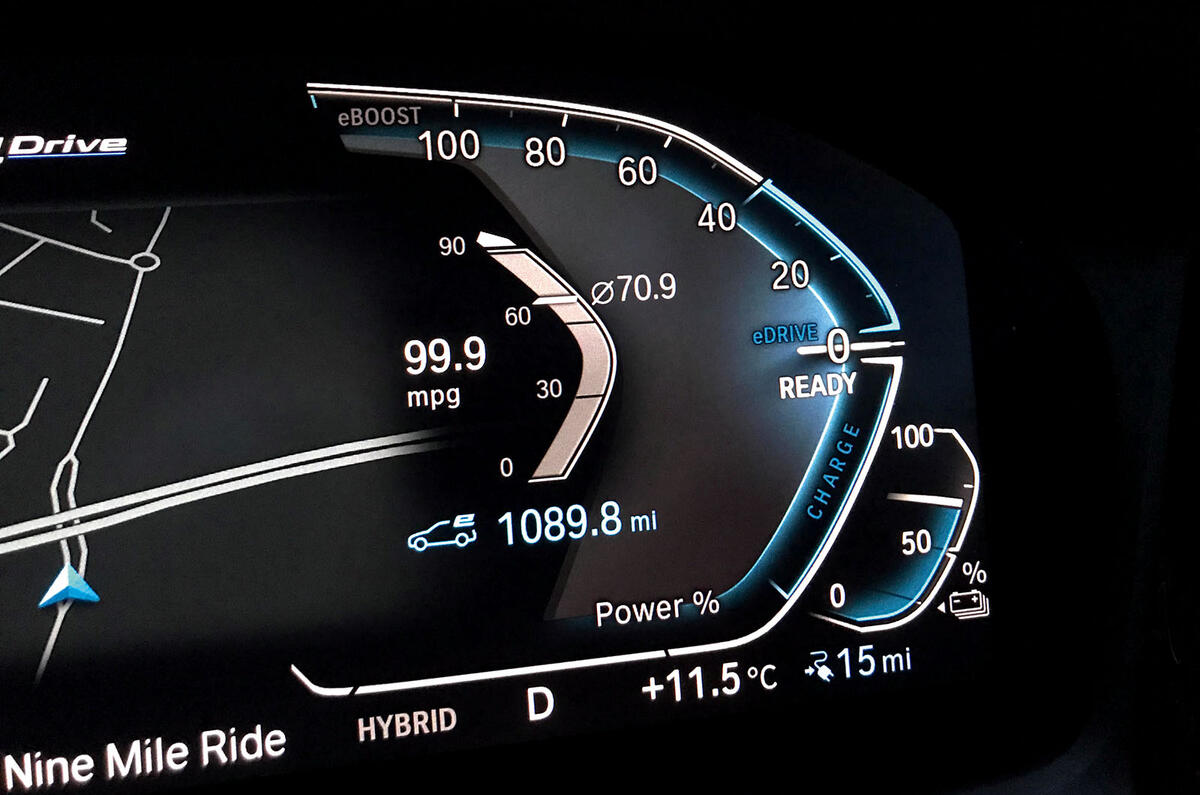
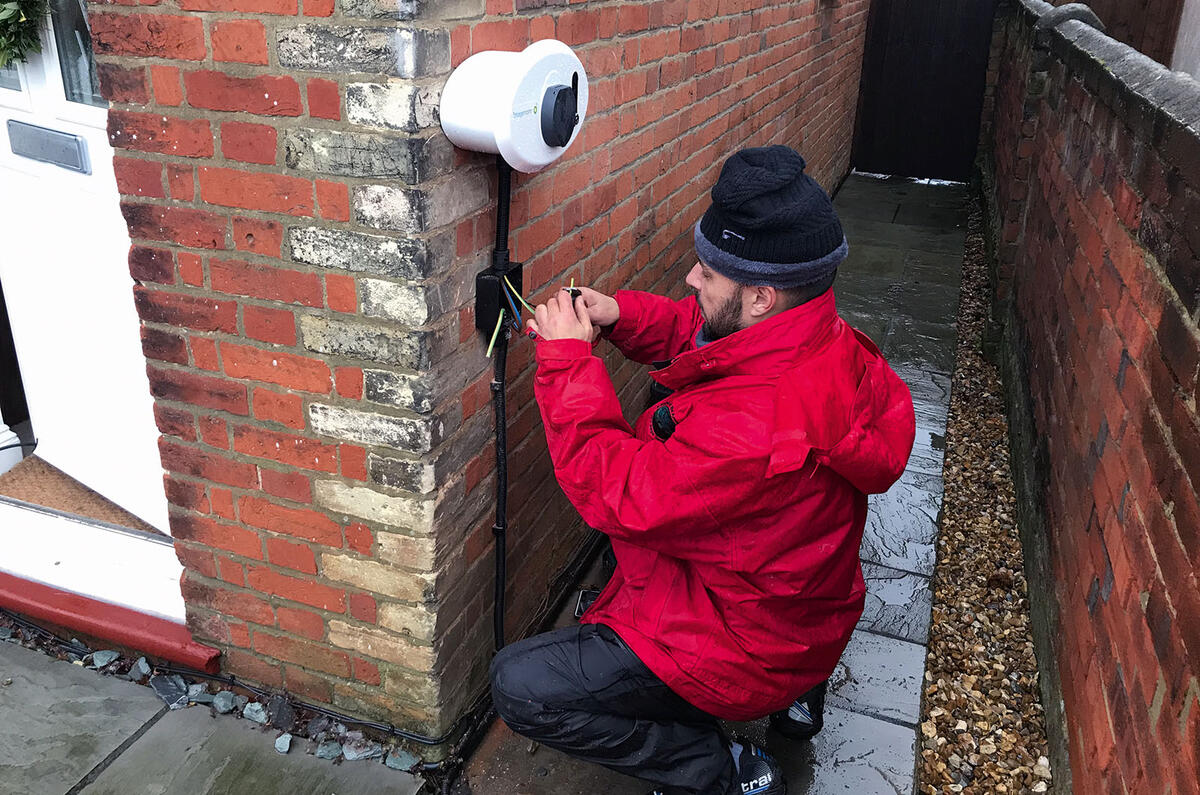
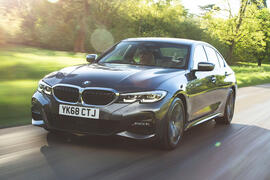
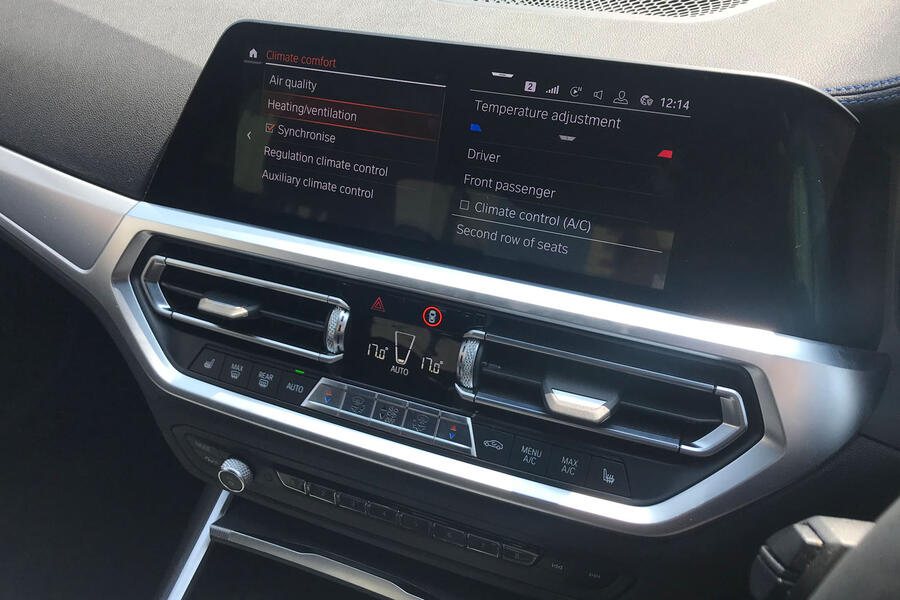
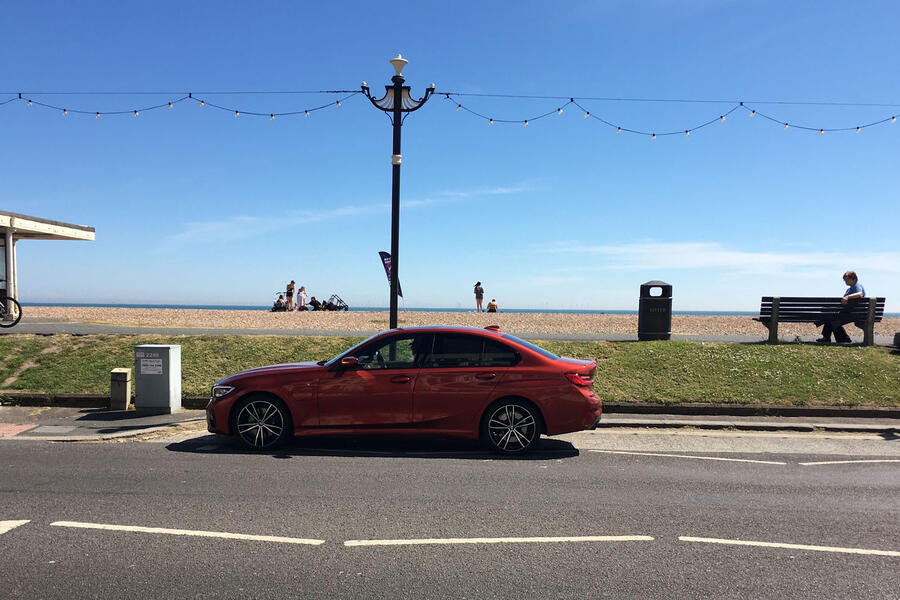



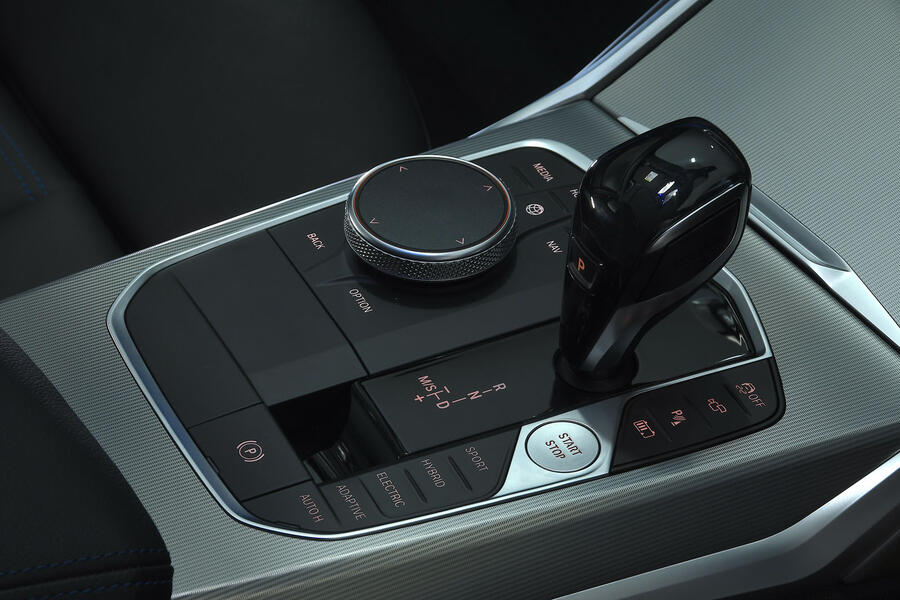
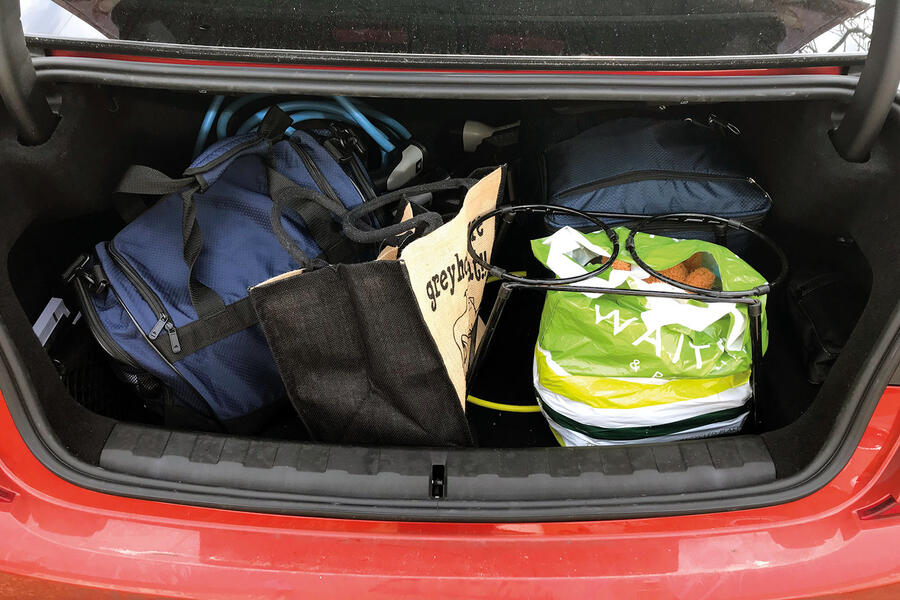
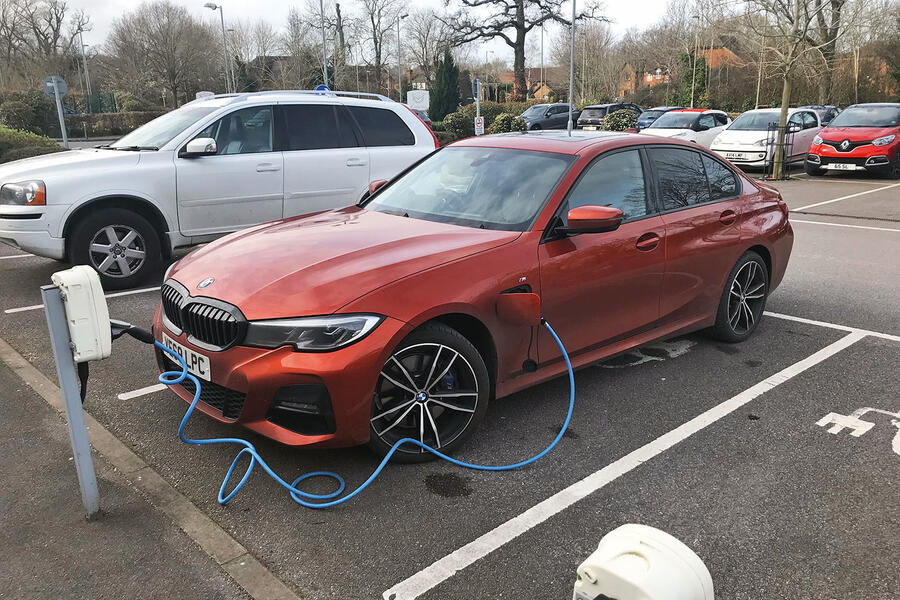
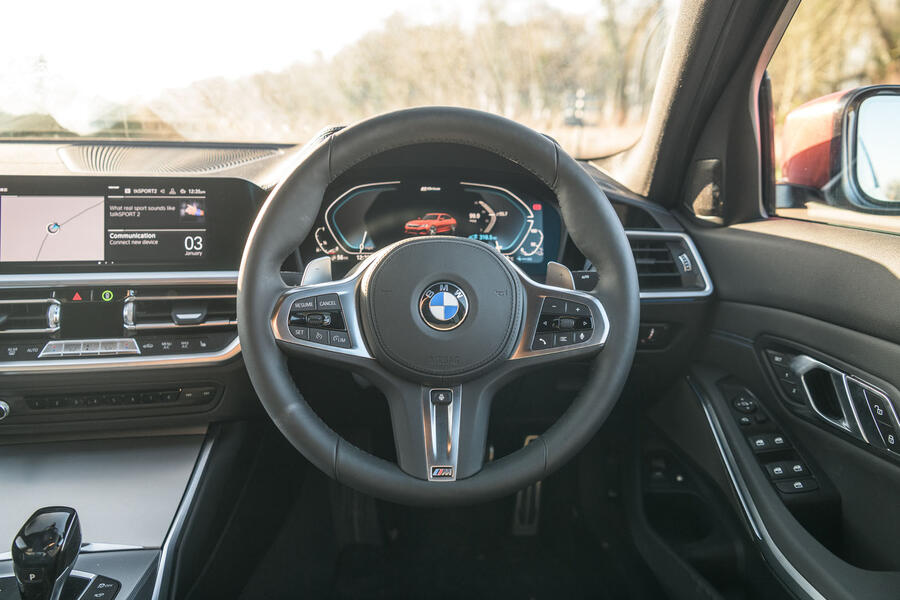
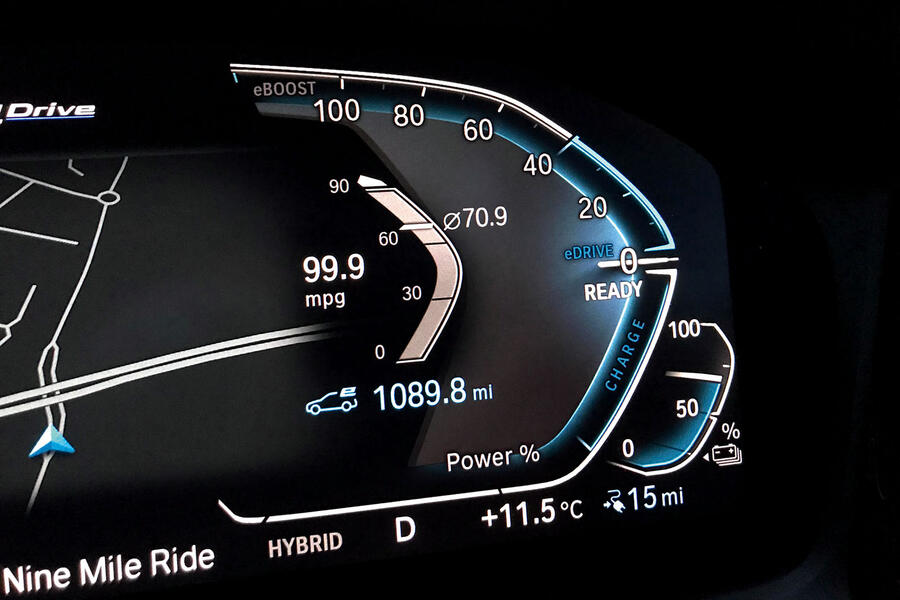
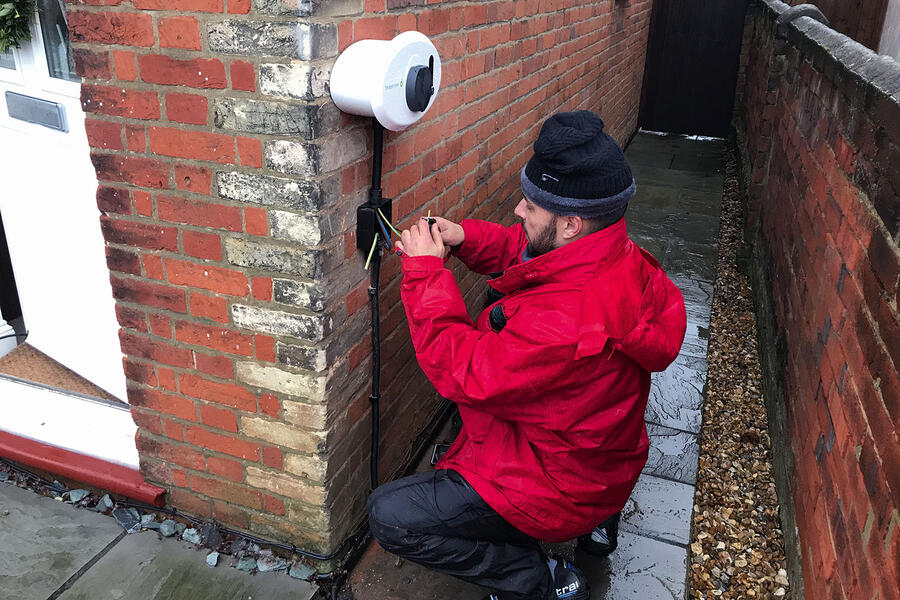
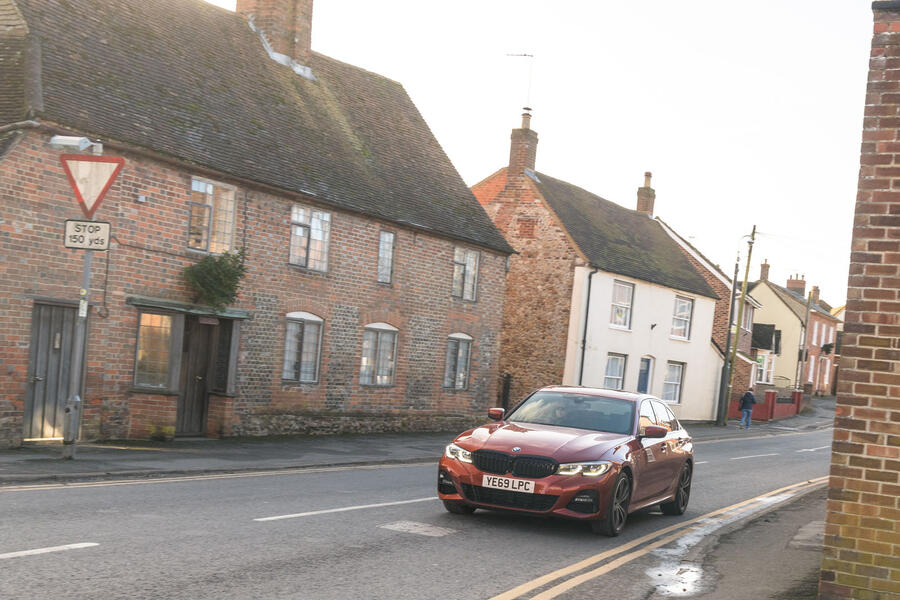
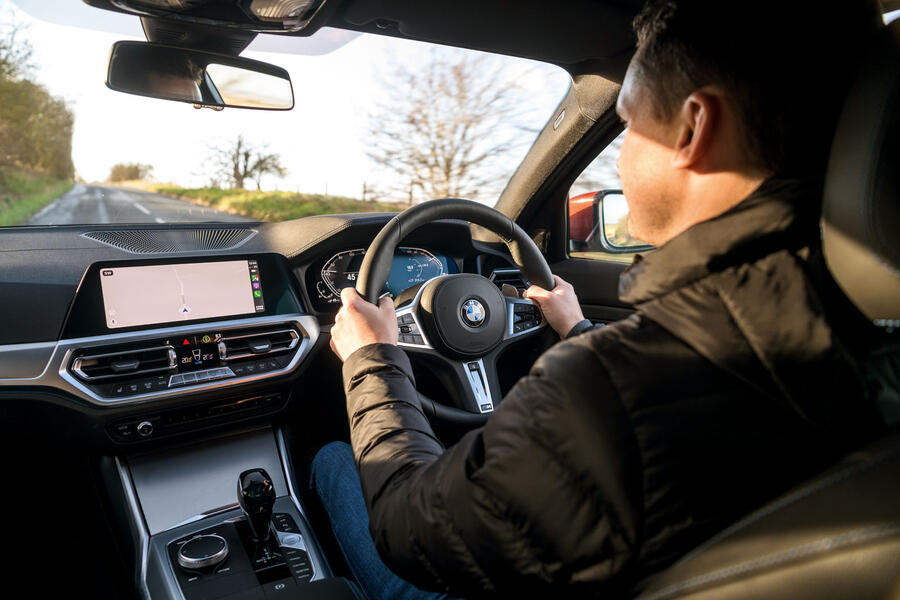

Join the debate
SamVimes1972
Our 320i arrives next week.
Our 320i arrives next week. The dealer pushed hard on the plus pack which is £2.5k on worse looking wheels, worse looking grille, coloured seatbelts and other unwanted trivia. The adaptive suspension wasn't a big enough difference to spend the money on. Most used cars have it and it means used 320d buyers have the privilege of paying an extra £30 a month in VED come year 2.
For company car drivers the 330e is a no brainer. However for those on an allowance make sure you get the dealer to price up a 320d, 320i and the 330e and do your sums. After discounts the 320i was by far the cheapest to run overall and for 90% of the time has all the performance you need compared to the 330e (apparently most owers don't charge the car up and are effectively running a 320i).
AddyT
@SamVimes1972
Or just don't buy a BMW in the first place. How about buying something that's a bit less common and more interesting? I know most of them aren't bad cars but why not choose something else?
SamVimes1972
Because it's my wife's car
xxxx
PHEV - 95% for tax dodgers
That figure pretty much says it all. The private buyers have obviously done their sums.
Takeitslowly
Moron
Peter Cavellini
Ditto.
Handing back ours after three years and 35,000 miles, been comfortable, sporty when needed , did about 42mpg average, would have another one if the base price hadn't gone up.
xxxx
The Lord giveth the Lord Taketh
Takeitslowly
Biggest moron
Jeremy
Tax dodge special
This 330E is a prime example of why governments should keep tax rules simple, and not get involved in things they don't understand. This car will be favoured by Co. car drivers (one of our managers at work has recently received one). And yet how many of those Co. car drivers will charge the car up overnight at home using their own electricity?? Very few!
So in reality the government is subsidising a car that will be less economical and emit more CO2 than the 320D because it will rarely be pluged in. And I thought the government were trying to become carbon neutral? They haven't got a clue. The Dutch government realised these car were justy tax dodge specials and withdrew their subsidies, leading to a fall in PHEV sales but and increase in EV sales. I wonder how long our government will take to realise the same?
ttlpjh
330i
I'm really surprised the 330i option doesn't get more coverage. It's genuinely fast, petrol, and will do 40mpg all day long.
Pages
Add your comment